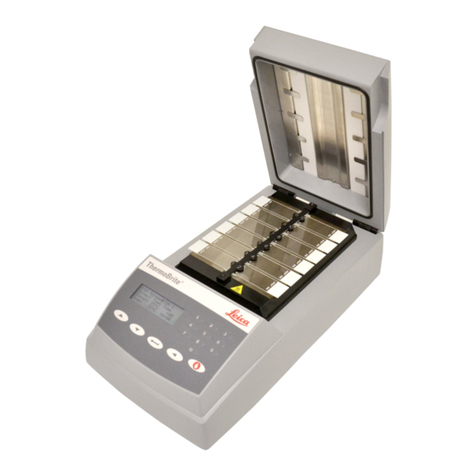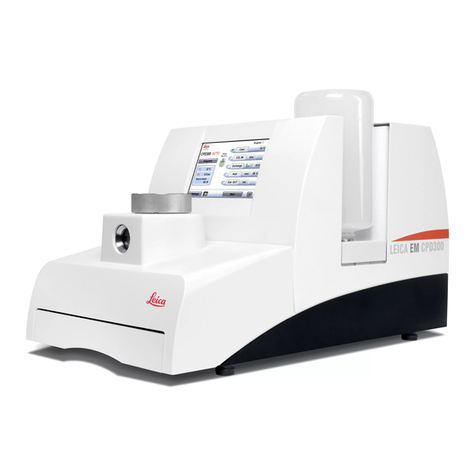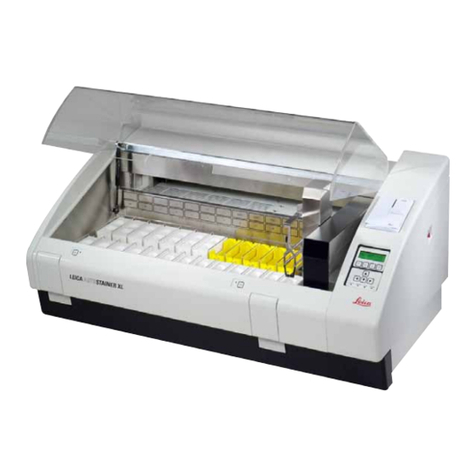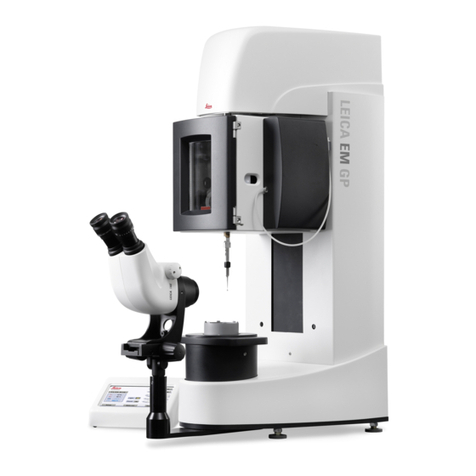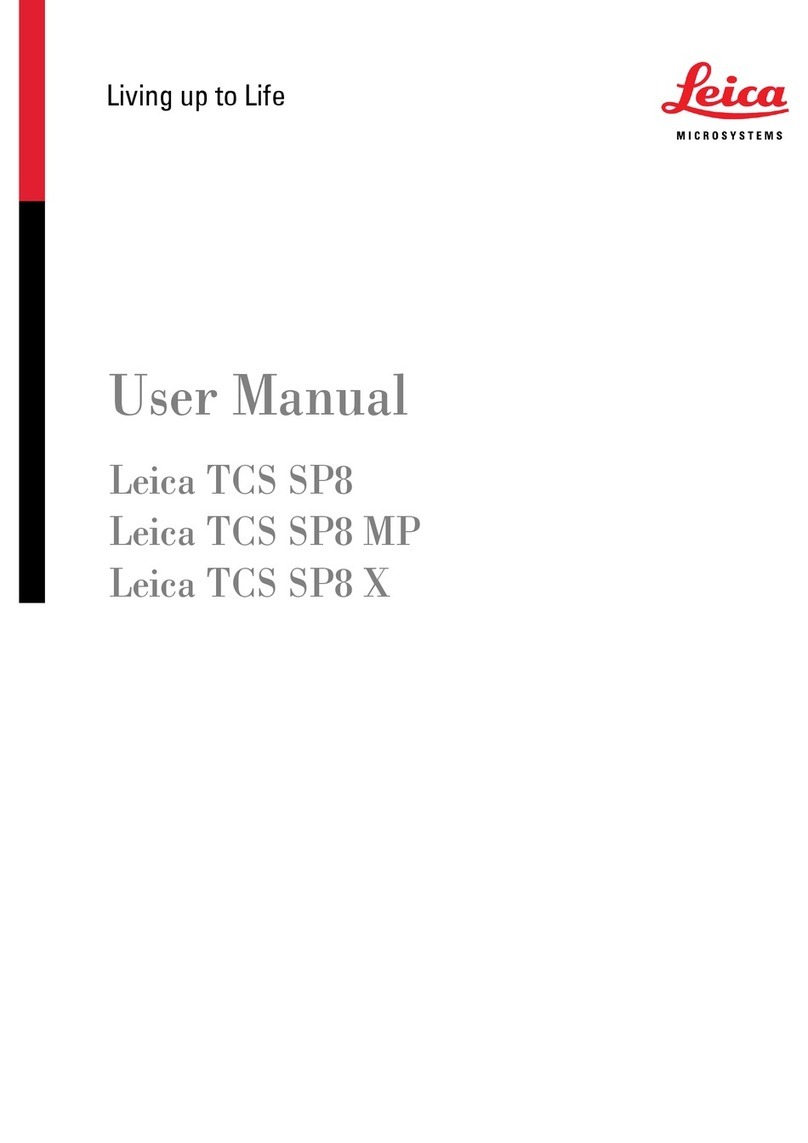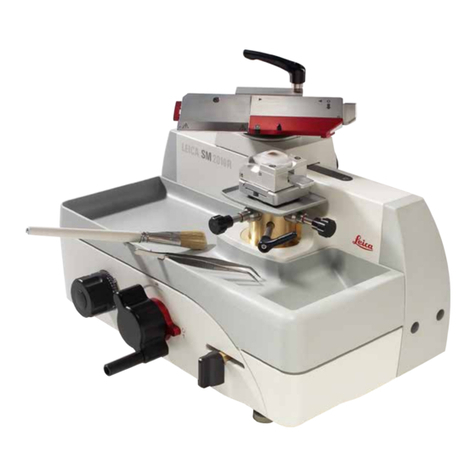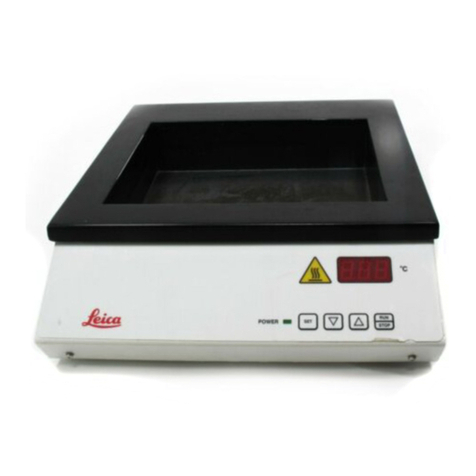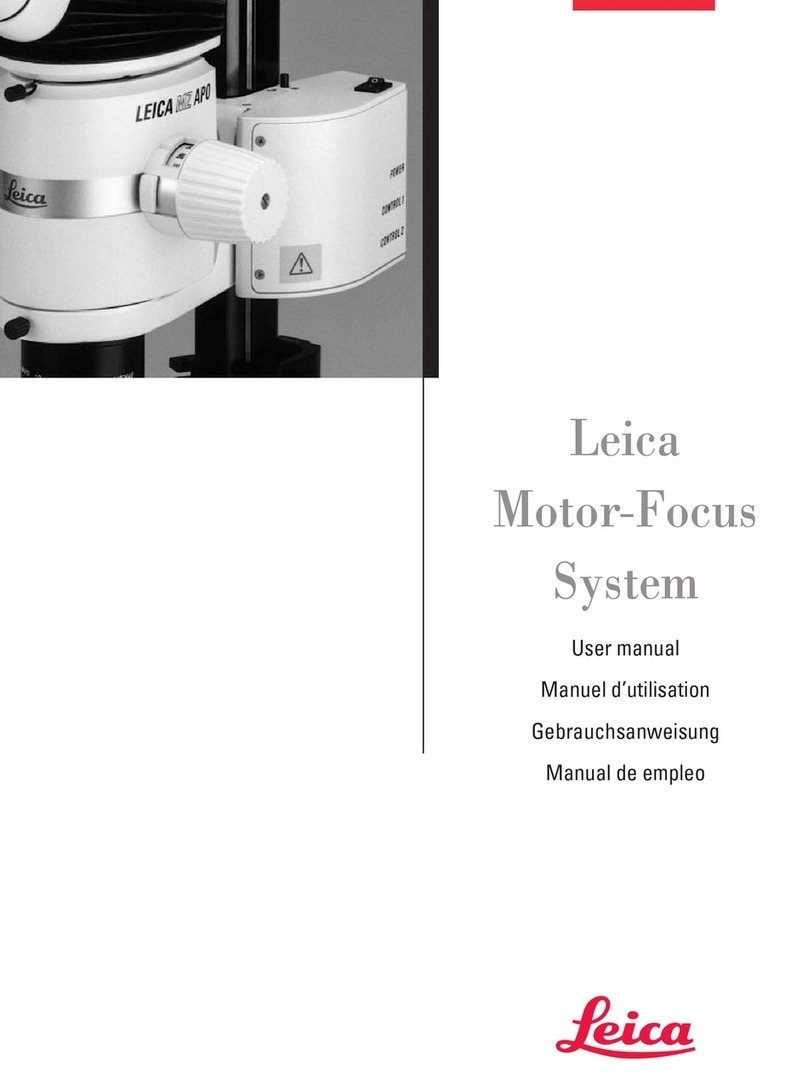
Chapter 1
Service Manual / Leica CM3050 S Page 4Version 1.0 12/00
© Leica Microsystems
Introduction
1.1 Allgemeine Informationen
1.1.1 Dokumentation
Die in der vorliegenden Dokumentation enthaltenen
nformationen, Zahlenangaben, Hinweise und
Werturteile stellen den uns nach gründlicher Re-
cherche bekannt gewordenen derzeitigen Stand
der Wissenschaft und Technik dar. Wir sind nicht
verpflichtet, das vorliegende Handbuch in kontinu-
ierlichen Zeitabständen neuen technischen Ent-
wicklungen anzupassen und Nachlieferungen, Up-
dates usw. dieses Handbuchs an unsere Kunden
nachzureichen.
Für fehlerhafte Angaben, Skizzen, technische Abbil-
dungen usw., die in diesem Handbuch enthalten
sind, ist unsere Haftung im Rahmen der Zulässigkeit
nach den jeweils einschlägigen nationalen Rechts-
ordnungen ausgeschlossen. nsbesondere besteht
keinerlei Haftung für Vermögensschäden oder son-
stige Folgeschäden im Zusammenhang mit der Be-
folgung von Angaben oder sonstigen nformationen
in diesem Handbuch.
Angaben, Skizzen, Abbildungen und sonstige nfor-
mationen inhaltlicher wie technischer Art in der
vorliegenden Bedienungsanleitung gelten nicht als
zugesicherte Eigenschaften unserer Produkte. n-
soweit sind allein die vertraglichen Bestimmungen
zwischen uns und unseren Kunden maßgeblich.
Leica behält sich das Recht vor, Änderungen der
technischen Spezifikation sowie des Produktions-
prozesses ohne vorherige Ankündigung vorzuneh-
men. Nur auf diese Weise ist ein kontinuierlicher
technischer wie produktionstechnischer Verbesse-
rungsprozeß möglich.
Die vorliegende Dokumentation ist urheberrechtlich
geschützt. Alle Urheberrechte liegen bei der Leica
Microsystems Nussloch GmbH.
Vervielfältigungen von Text und Abbildungen (auch
von Teilen hiervon) durch Druck, Fotokopie, Micro-
film, Web Cam oder andere Verfahren – einschließ-
lich sämtlicher elektronischer Systeme und Medien
– ist nur mit ausdrücklicher vorheriger schriftlicher
Genehmigung von Leica Microsystems Nussloch
GmbH gestattet.
Die Seriennummer sowie das Herstellungsjahr ent-
nehmen Sie bitte dem Typenschild an der Rückseite
des Geräts.
ãÿ
Leica Microsystems Nussloch GmbH
1.1 General Information
1.1.1 Dokumentation
The information, numerical data, notes and value
judgments contained in this manual represent the
current state of scientific knowledge and state-of-
the-art technology as we understand it following
thorough investigation in this field. We are under no
obligation to update the present manual periodically
and on an ongoing basis according to the latest
technical developments, nor to provide our
customers with additional copies, updates etc. of
this manual.
For erroneous statements, drawings, technical
illustrations etc. contained in this manual we
exclude liability as far as permissible according to
the national legal system applicable in each
individual case. n particular, no liability whatsoever
is accepted for any financial loss or consequential
damage caused by or related to compliance with
statements or other information in this manual.
Statements, drawings, illustrations and other
information as regards contents or technical details
of the present manual are not to be considered as
warranted characteristics of our products. These
are determined only by the contract provisions
agreed between ourselves and our customers.
Leica reserves the right to change technical
specifications as well as manufacturing processes
without prior notice. Only in this way is it possible to
continuously improve the technology and
manufacturing techniques used in our products.
This document is protected under copyright laws.
Any copyrights of this document are retained by
Leica Microsystems Nussloch GmbH.
Any reproduction of text and illustrations (or of any
parts thereof) by means of print, photocopy,
microfiche, web cam or other methods – including
any electronic systems and media – requires
express prior permission in writing by Leica
Microsystems Nussloch GmbH.
For the instrument serial number and year of
manufacture, please refer to the name plate at the
back of the instrument.
ã
Leica Microsystems Nussloch GmbH



